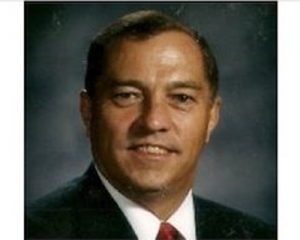Resources
NAA is pleased to offer the afterschool professional a wide range of tools and downloads designed to both grow your career and strengthen your program.

Early Warning Confirmed
Reading matters, especially when it comes to the next generation. Since the invention of social media, children have become more in-tune with a short-hand version of writing and a low reading comprehension as they get to the higher grade levels.
10 Transition or Wait Time Games for School-Age Children
Keeping kids entertained can be one of the toughest jobs. Some like to do one thing while others like to do something else. Making sure everyone is satisfied is difficult, but with a large arsenal of fun, interactive games, you'll be sure to keep all the kids moving and involved, begging to play them again and again. Check out these great transition/wait time games to make you and your kids happy.
Core Competencies

The Core Knowledge, Skills, and Competencies for Out-of-School Time Professionals (CKSCs) outline what professionals who work with and for youth need to know, show, and grow to positively impact young people and the field. The CKSCs can be used across organizations, programs, and funding streams to define what it takes to work with and for children and youth. They can also guide the development of compensation structures, inclusive and culturally responsive hiring practices, professional development (PD) and PD plans, career pathways, credentials and qualifications, and mechanisms for demonstrating and assessing practitioner’s skills.
Training On Your Time
The National Out of School Time Professional Development Center (OSTPD) is the premier hub for afterschool professionals who want the freedom to pursue training on a schedule that works for them. As a web-based system, the OSTPD gives members access to the best online courses, including thirty-six OST Certificate Series Courses from afterschool expert Roberta L. Newman.
10 Tips for Aligning the Learning Day
In many learning communities, one of the biggest challenges facing the afterschool profession is the process of aligning programs with the regular school day. Conceptualization of an aligned learning day involves sharing a mission, vision, turf, resources, and core beliefs about where children and youth can learn.
Twenty-Five Years of Out-of-School Time Jargon and Acronyms
The National AfterSchool Association proudly celebrates its twenty-fifth anniversary as the national organization charged with leading the development, education, and care of children and youth during out-of-school hours. As our profession developed, so did the acronyms and terms associated with out-of-school time (OST). Have you ever been part of a conversation full of acronyms and terms you didn’t understand?
Always Changing
This article in Sunday’s Washington Post caught my attention – both as an afterschool leader and also as a former classroom teacher. The author, a former public high school English teacher, gives a first-hand account of the decades of school reform initiatives he was expected to endure, year-after-year, as he attempted to engage, empower, and educate his students. For those of us who have been in education for even just a few years, I’m sure you’ll identify with his experiences.
Reading Recommendations for Afterschool Leaders
Who doesn't love to read, especially when it is in regards to afterschool, leadership, and connecting with students? We have some great reading recommendations for you to check out, read, and enjoy. If you have any reading recommendations you would like to share, comment on the post, share on our Facebook page, or e-mail us with your suggestions!
Facilitating Successful Group Meetings
Group meetings with your staff don't have to be long and boring. We do work in the afterschool field afterall. Let's have some fun, spice it up, and facilitate successful meetings with these ten great tips.
If I Were an Afterschool Program Site Director
If I were an afterschool program site director, I’d approach my responsibilities recognizing that my leadership would directly impact and influence the quality outcomes of the program. I’d work hard. I’d thrive on the challenges that appeared each day. I’d work from the contention that my position was just as important as any other educational leadership role because of the influence I’d have in the lives of children, youth, and their families.
National AfterSchool Association • 2961A Hunter Mill Road, #626 • Oakton, VA 22124 • info@naaweb.org









